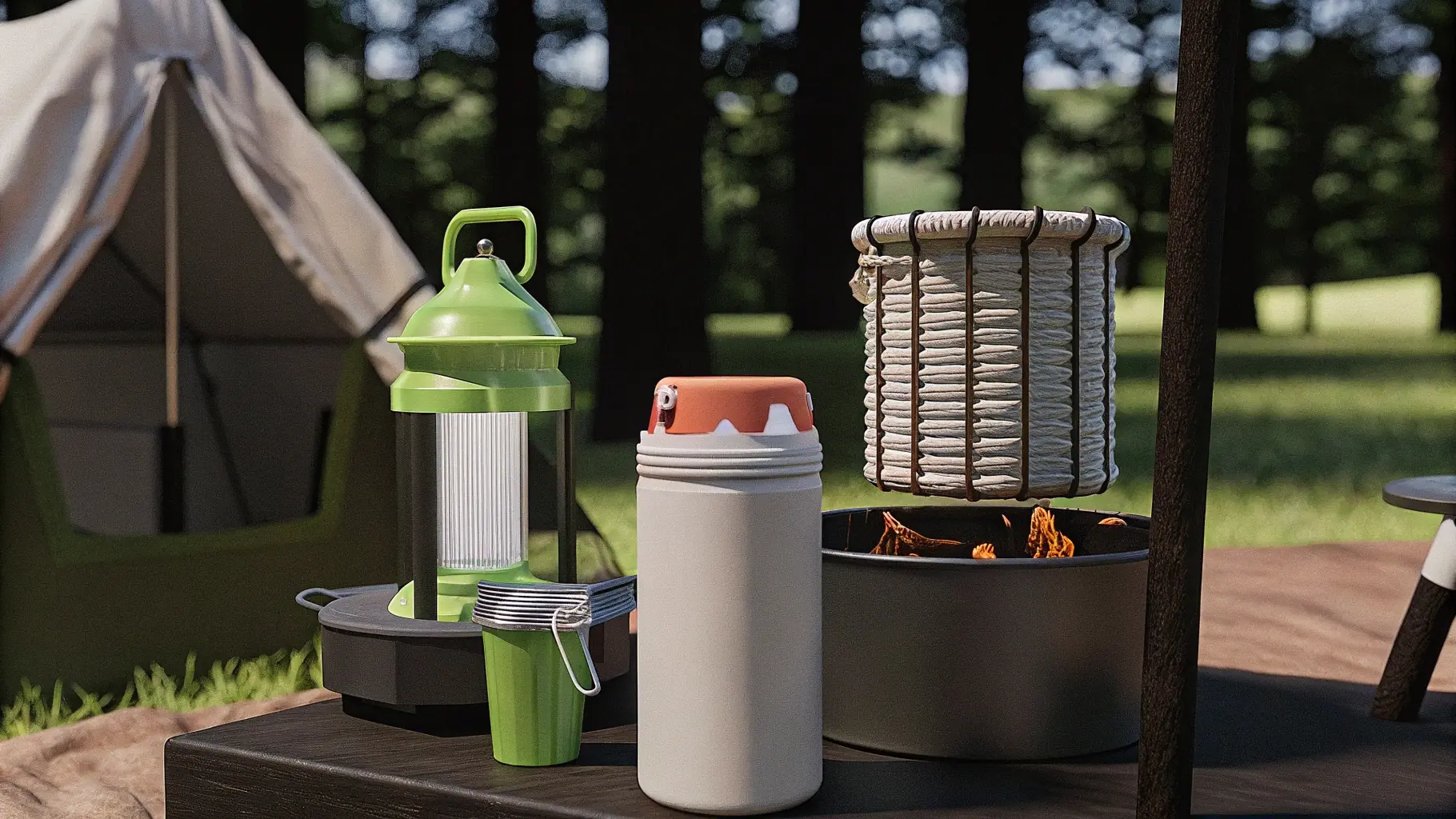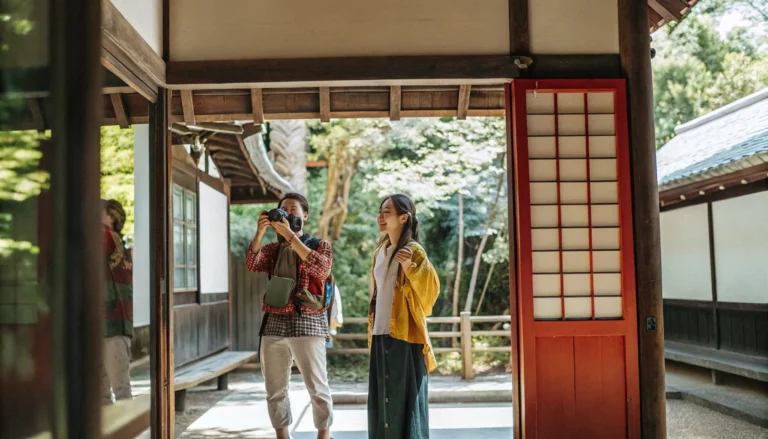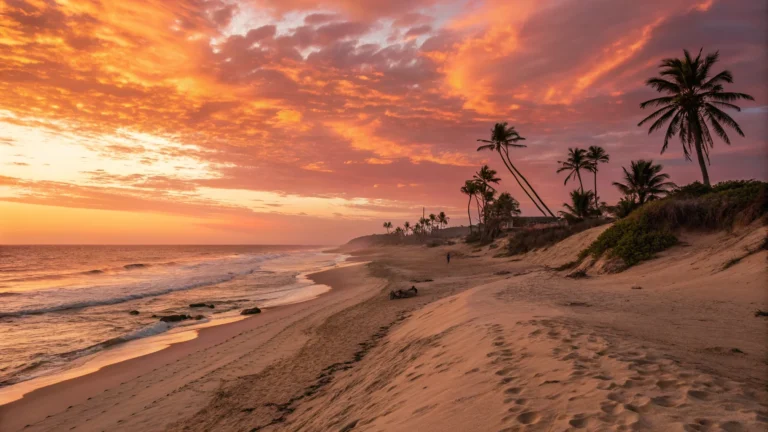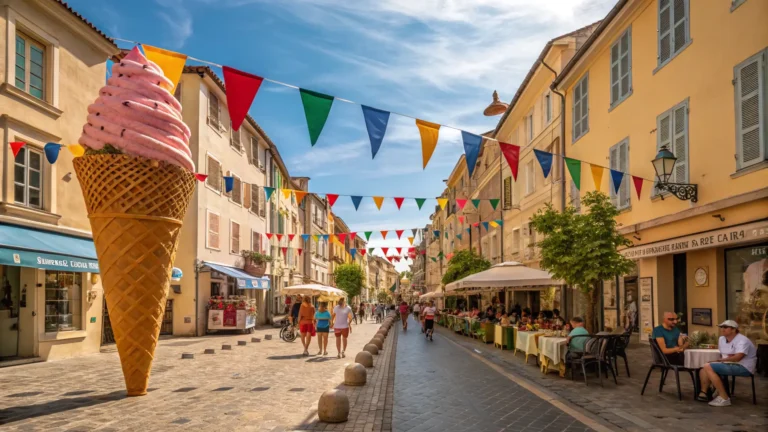Camping Hacks 10 Expert Secrets to Upgrade Your Next Trip!
Last updated on May 26th, 2025 at 04:13 pm
Last summer, my buddy Jake and I decided to surprise our girlfriends with a romantic weekend getaway in the mountains. What we delivered was more like a comedy of errors that would’ve made even the Three Stooges cringe.
Picture this mess: It’s 9 PM, pitch black, and we’re fumbling around trying to figure out why our brand-new tent looks like a deflated balloon. Meanwhile, the girls are sitting on a log, watching us with the kind of patience you’d show a toddler trying to tie his shoes. Our expensive cooler had turned our steaks into room-temperature biology experiments, and the “easy setup” camp stove was about as cooperative as a stubborn mule.
That night, huddled in our sad excuse for a shelter while listening to what sounded like a freight train worth of wind, I made myself a promise. Never again would I wing it in the wilderness.
Fast-forward to today, and I’ve become that guy – you know, the one whose campsite looks effortless while everyone else is struggling with basic tasks. The secret isn’t magic or years of Boy Scout training. It’s knowing a handful of simple tricks that experienced outdoorspeople have figured out through trial and plenty of error.
These aren’t the usual “bring extra batteries” suggestions you’ll find everywhere else. These are the real-deal solutions that separate weekend warriors from people who actually know what they’re doing out there.
Stop Buying Your Way Out of Problems
Here’s what took me way too long to figure out: most camping disasters happen because people don’t understand the basics, not because they need fancier equipment.
I used to be that person browsing REI like it was Amazon, convinced that the right gear would solve all my outdoor problems. Spent a fortune on a sleeping system that promised to keep me cozy in arctic conditions, only to spend another miserable night shivering because I didn’t know where to set up my tent.
Meanwhile, my neighbor Bill – a retired forest service guy – was sleeping like a baby in gear that looked like it survived the Reagan administration. The difference wasn’t his equipment. It was his knowledge of how things actually work outside your comfort zone.
Smart camping tricks save you in three ways that matter:
- Time (no more two-hour setup sessions that should take twenty minutes)
- Cash (stop buying solutions to problems you can solve for free)
- Sanity (because camping should be relaxing, not stressful)
Before You Leave Home: Two Simple Moves That Change Everything
Most camping trips are won or lost before you ever leave your driveway. These two preparation tricks have saved more of my trips than everything else combined.
Become a Weather Detective
Everybody checks the weather once and thinks they’re prepared. That’s like checking your bank account on payday and assuming you’re rich all month.
Real weather watching works like this: Start checking conditions three days before you leave. Look at the big picture – what’s happening the day before you arrive and the day after you leave. Weather systems don’t care about your vacation schedule, and storms that are “supposed” to hit after you leave have a funny way of showing up early.
But don’t just look at those little sun and cloud icons. Dig into the hourly breakdown. Check wind speeds and directions. Most importantly, look at overnight lows. I’ve seen plenty of August camping trips turn miserable because people packed for 80-degree days and forgot about 45-degree nights.
The Stuff-Inside-Stuff Packing Revolution
This trick alone will make you look like a packing genius, and it’s so obvious you’ll kick yourself for not thinking of it sooner.
Pack everything inside something else. Your spare socks live inside your hiking boots. Clean underwear goes inside your extra fleece. Toiletries nest inside your cooking pot. First aid supplies fit perfectly inside your food storage container.
The magic happens because you eliminate all that wasted space between items, nothing gets lost in the depths of your pack, and unpacking becomes a breeze because everything has a logical home.
Your pre-trip success checklist:
- Start weather surveillance 72 hours early
- Practice the stuff-inside-stuff method at home first
- Make a “last-minute” list for items you can’t pack until departure
- Snap photos of your packed gear (seriously, you’ll forget what you brought)
Sleep Better Than You Do at Home
Nothing ruins a camping trip faster than a terrible night’s sleep. These shelter tricks have turned me from a grumpy morning zombie into someone who actually wakes up refreshed in the woods.
The Wind Wisdom Your Tent Doesn’t Come With
Every camping guide tells you to find flat, high ground for your tent. That advice will guarantee you a night of listening to your tent walls flap like they’re trying to achieve flight.
Here’s what works: Look for a spot that’s slightly lower than the surrounding area – think gentle dip, not crater. Wind behaves like water, flowing around obstacles and creating turbulence. When you camp on high ground, you become the obstacle. Camp in a shallow depression, and the wind flows over you instead of battering you all night.
I learned this from a crusty old campground host in Montana who’d been watching people struggle with wind for decades. He walked me to two spots fifty feet apart – one on a small rise, one in a slight hollow. The difference in wind noise was night and day.
Just make sure your dip has good drainage. You want a wind shelter, not a swimming pool if it rains.
The Poor Man’s Sleep System That Beats Expensive Gear
Forget spending hundreds on fancy sleeping pads. Here’s how to build comfort from the ground up using stuff you probably already own:
Start with your tent floor, then layer like this:
- Tarp or footprint (keeps moisture away)
- Cheap foam pad (the kind that costs twenty bucks)
- Your regular sleeping pad on top
- Extra clothes or a blanket under your sleeping bag
- Your sleeping bag
That clothes layer is pure magic. It creates dead air space that traps heat better than any single piece of gear I’ve ever bought. I’ve stayed warm in freezing weather using a summer sleeping bag with this setup.
Turn Tomorrow’s Clothes Into Tonight’s Comfort
Instead of packing a camping pillow, stuff your next day’s clothes into a pillowcase or stuff sack. You get a pillow that’s exactly the right height for your neck, plus your clothes stay clean and organized.
The secret is layering your clothes strategically inside the pillowcase. Put soft, compressible items like down jackets at the bottom for support, then add less squishy clothes like jeans or fleece on top. This creates a pillow that won’t go flat halfway through the night.
Keep Your Food Fresh and Your Stomach Happy
Food disasters have ended more camping trips than bad weather and equipment failures combined. These tricks will keep your meals safe and your taste buds satisfied.
The Cooler Strategy That Actually Works
Stop throwing everything into your cooler like you’re filling a garbage can. Smart cooler management uses zones, just like organizing your refrigerator at home.
Bottom zone: Things that absolutely must stay cold – raw meat, dairy, anything that could make you sick if it warms up Middle zone: Items that should stay cold – leftovers, beverages, vegetables
Top zone: Stuff that just needs to stay cool – condiments, fruits, snacks that won’t kill you if they warm up a bit
Pack ice around the bottom zone, and discipline yourself to only open the cooler when you actually need something. Every time you pop it open to grab a beer, you’re dumping about a third of your cold air.
Pro move: Freeze water bottles instead of buying bags of ice. They last longer, don’t create a soggy mess when they melt, and you end up with perfectly chilled drinking water as a bonus.
Double-Team Your Water Safety
Even with a good filter, always have a backup plan for making water safe. My approach uses two steps:
Step one: Remove the big stuff – bacteria and parasites – by boiling, filtering, or both Step two: Kill viruses with purification tablets
Most people skip step two because their filter seems sufficient. But filters can’t catch viruses – they’re too small. Boiling works if you do it long enough at your elevation (higher altitude means longer boiling time), but tablets are foolproof backup insurance.
The double system means you’re covered no matter what’s lurking in that mountain stream.
Master Fire and Cooking Like a Campfire Chef
Good fire management separates people who eat well from people who eat burned hot dogs and raw potatoes.
The Three-Pile Fire Method
Instead of scrounging for wood throughout the evening, set up three organized piles next to your fire ring before you light anything: pencil-thin tinder, thumb-thick kindling, and wrist-thick fuel wood.
Most people constantly abandon their fire to hunt for the right size pieces. With pre-sorted piles, you can maintain perfect flames without ever leaving your chair.
The magic ratio: For every handful of tinder, gather three handfuls of kindling and five pieces of fuel wood. This combination gives you about an hour of steady, manageable fire.
Foil Packet Cooking That Doesn’t Suck
Forget everything you’ve heard about wrapping food in foil and tossing it in the flames. That’s a recipe for charred outsides and raw middles.
Use heavy-duty foil in double layers. Put your food in the center with seasonings and a splash of liquid – wine, broth, even water works. Fold the edges multiple times to create a real seal, not just a loose wrap.
The cooking secret: Don’t put packets directly on coals. Place them at the edge of your fire where they get steady, moderate heat. Flip them every ten minutes or so.
I’ve cooked salmon, chicken, vegetables, even desserts this way. The food steams in its own juices and comes out more flavorful than most camp stove meals.
Stay Safe Without Being Paranoid
Smart safety isn’t about being afraid of the outdoors. It’s about simple preparation that prevents problems before they start.
Make Your Phone Battery Last When It Matters
Your phone might be your lifeline if things go wrong, but it’s also a battery vampire in the wilderness. Here’s how to make it last when you need it most:
Switch to airplane mode but keep GPS turned on. This lets you use maps and navigation without constantly searching for cell towers that aren’t there anyway. Download offline maps before you leave civilization.
Set specific times to check your phone – maybe every couple hours during the day. Constant checking drains battery even when there’s no signal to connect to.
Battery-saving priority list:
- Airplane mode with GPS only
- Screen brightness at minimum
- Close apps you’re not actively using
- Turn off Bluetooth and WiFi searching
Keep Animals Away Without Paranoia
Most wildlife encounters happen because of smells, not just food odors. Animals have noses that make bloodhounds look amateur, and they’re attracted to way more than just your leftover hamburgers.
Store anything with any scent in the same secure location as your food – bear box, car, or hanging from a tree. This includes toiletries, cosmetics, garbage (even empty containers smell), dirty clothes that smell like campfire smoke, and pet supplies.
I learned this lesson when a curious black bear spent twenty minutes investigating my campsite. Turned out my mint toothpaste was the attraction, not the food I’d carefully secured. Now everything scented gets the same treatment as food.
Advanced Tricks for Experienced Campers
Once you’ve mastered the basics, these refined techniques will set you apart from casual weekend campers.
The Smart Way to Pack Duct Tape
Don’t bring a whole roll – it’s heavy and takes up space you don’t have. Instead, wrap fifteen feet of duct tape around your water bottle or walking stick before leaving home.
Take it one step further: bring two types. Regular duct tape for heavy-duty repairs, and clear packing tape for gear you want to keep looking decent. Clear tape works great for temporary tent fixes because you can see through it to check the damage.
Camp uses for duct tape:
- Emergency tent and gear repairs
- Securing loose items in wind
- Blister prevention (works better than expensive moleskin)
- Improvised rope when torn into strips
- Trail markers or campsite identification
Save Money by Taking Care of Your Gear
The most expensive camping gear is the stuff you have to replace because you didn’t maintain it properly. These simple maintenance tricks have kept my equipment working for years longer than expected.
Tent care: Set it up in your yard after every trip and let it dry completely before storing. Trapped moisture leads to mildew and fabric breakdown faster than normal wear and tear.
Sleeping bag maintenance: Never store it compressed in its stuff sack. Hang it in a closet or store it loose in a big cotton bag. Compressed insulation loses its ability to trap air and keep you warm.
Water filter longevity: Rinse and backflush after every trip, even if the manual says it’s optional. A quick cleaning now beats buying a replacement filter later.
These easy steps have helped me keep equipment functional for years past its expected lifespan.
Your Next Adventure Starts Now
These ten camping tricks represent everything I wish I’d known during that embarrassing disaster with Jake and the girls. They’re not complicated, they don’t require expensive purchases, and they solve the real problems that make camping frustrating instead of fun.
The best part? You can use most of these ideas on your very next trip. Start with whichever ones address your biggest camping headaches – staying comfortable at night, keeping food fresh, or setting up camp efficiently.
Remember, the goal isn’t to make camping more complex. It’s to make it more reliable and enjoyable. These tricks work because they’re based on understanding how things actually function outdoors, not just following generic advice from people who’ve never spent a night in a tent.
Your next outdoor adventure is out there waiting, and now you have the knowledge to make it memorable for all the right reasons. The wilderness will still surprise you – that’s part of what makes it special – but you’ll be ready for whatever challenges come your way.
What camping frustrations have you dealt with that these tricks might solve? Share your stories and any additional tips you’ve discovered in the comments below. Let’s help each other become the kind of campers who make it look easy.








One Comment